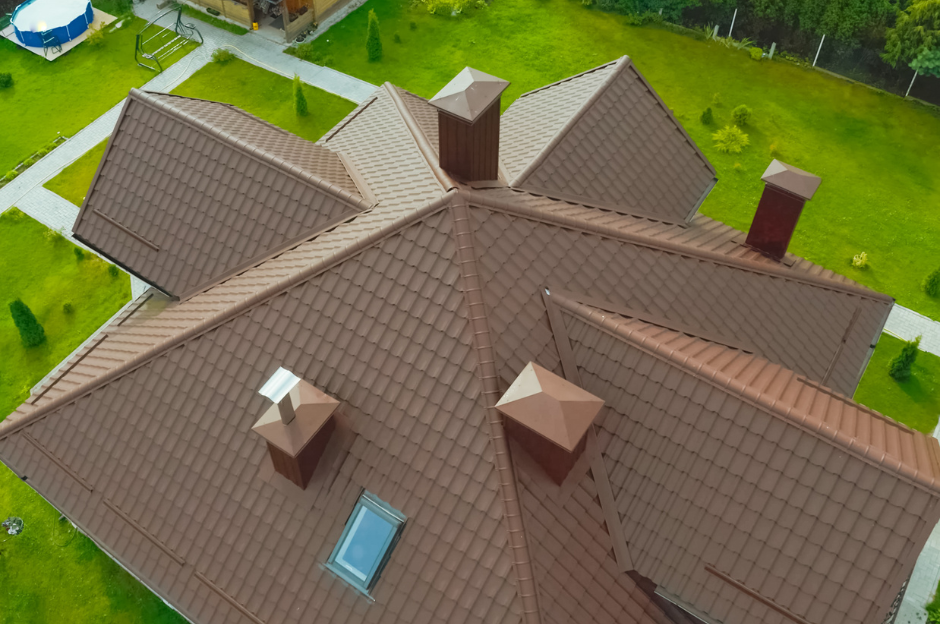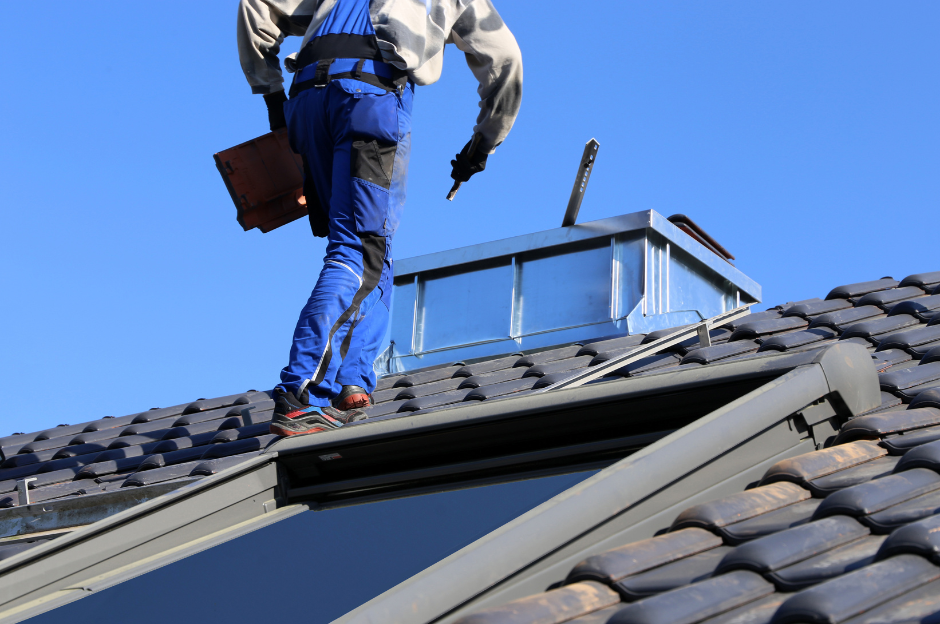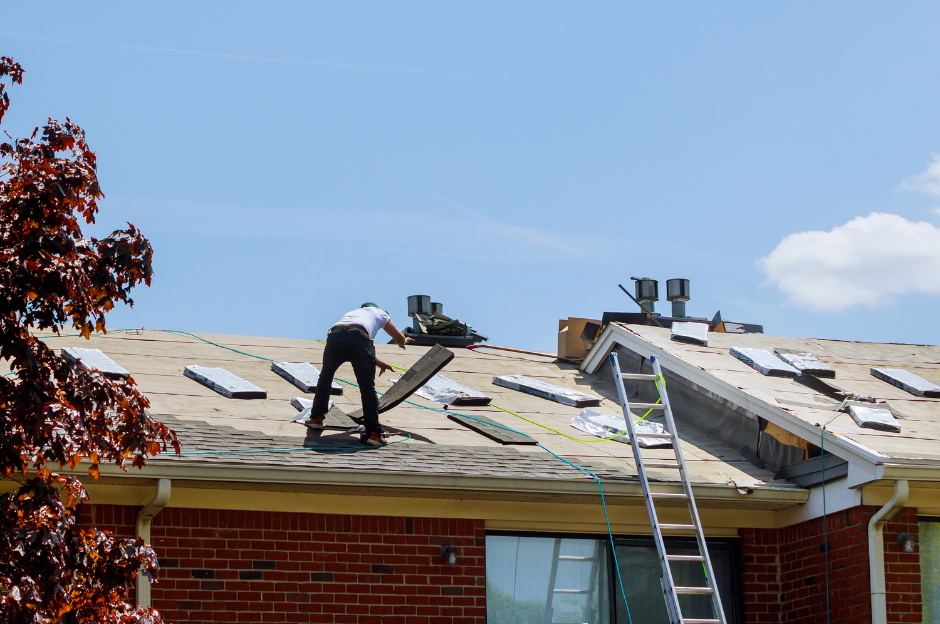Roofing Solutions for High-Wind Areas: Strength and Resilience
July 26, 2024

When it comes to protecting your home, your roof is your first line of defense against the elements. In high-wind areas, where storms and severe weather conditions are common, having a roof that can withstand powerful gusts is crucial. In such environments, the integrity of your roof not only ensures the safety and comfort of your home but also prolongs the lifespan of your property. This blog post explores roofing solutions designed for high-wind areas, emphasizing the importance of strength and resilience in your roofing choices.
Understanding High-Wind Areas
High-wind areas are regions prone to strong gusts and sustained winds, often associated with severe weather events such as hurricanes, tornadoes, and strong thunderstorms. These areas typically include coastal regions, mountainous regions, and places that are frequently exposed to extreme weather conditions. In these environments, roofs face intense pressure, which can lead to significant damage if not properly addressed.
Key Considerations for Roofing in High-Wind Areas
Wind Resistance Ratings:
Roofing materials come with different wind resistance ratings, which indicate how well they can withstand strong winds. The most common rating system is the ASTM (American Society for Testing and Materials) standard, which measures wind resistance in miles per hour (mph). Ensure that your roofing materials have a rating appropriate for the wind speeds typical in your area.
Roof Design and Slope:
The design and slope of your roof play a significant role in its ability to resist wind damage. Roofs with steep slopes are generally more resistant to wind uplift than flatter roofs. Additionally, aerodynamic roof designs that reduce wind resistance can improve overall performance.
Quality of Installation:
Proper installation is as crucial as the quality of the roofing materials. A well-installed roof with secure fastenings and correct application of materials will perform better under high-wind conditions. Ensuring that your roofing contractor is experienced and follows industry best practices is essential.
Top Roofing Materials for High-Wind Areas
Metal Roofing:
Metal roofing is a popular choice for high-wind areas due to its exceptional durability and wind resistance. Metal panels, such as steel or aluminum, are designed to withstand high winds and are less likely to be torn off by strong gusts. Additionally, metal roofs are fire-resistant and have a long lifespan, making them a cost-effective option in the long run.
Standing Seam Metal Roofs: These roofs feature raised seams that are interlocked, creating a strong barrier against wind infiltration. The raised seams also reduce the risk of water leakage.
Metal Shingles: Metal shingles mimic the appearance of traditional roofing materials like asphalt or wood but offer superior wind resistance and durability.
Architectural Shingles:
Architectural or laminated shingles are a step up from traditional asphalt shingles in terms of durability and wind resistance. These shingles have multiple layers, providing added strength and better performance in high-wind conditions. Look for shingles with a high wind resistance rating and strong adhesive properties.
Wind-Resistant Asphalt Shingles: Many manufacturers offer asphalt shingles specifically designed to withstand high winds. These shingles have enhanced adhesive strips and reinforced designs to prevent wind uplift.
Concrete and Clay Tiles:
Concrete and clay tiles are known for their strength and durability. They can withstand high winds and are resistant to damage from hail and debris. However, proper installation is crucial, as the tiles must be securely fastened to prevent them from being displaced by strong winds.
Interlocking Tiles: Interlocking concrete or clay tiles provide additional resistance to wind by creating a secure connection between each tile, reducing the risk of wind-driven damage.
Synthetic Roofing Materials:
Synthetic roofing materials, such as rubber, polymer, and composite shingles, offer a combination of durability and flexibility. These materials are often designed to mimic the appearance of traditional roofing options while providing enhanced wind resistance and impact protection.
Rubber Roofing: Rubber roofing products, such as EPDM (ethylene propylene diene monomer) membranes, are highly resistant to wind and weather conditions. They offer a seamless installation that minimizes the risk of leaks.
Composite Shingles: Composite shingles made from a blend of materials can offer superior wind resistance and durability compared to traditional asphalt shingles. They are often lightweight and easy to install.
Roofing Design and Installation Tips
Reinforce Roof Structure:
Reinforcing your roof structure can improve its ability to withstand high winds. This includes adding additional support to roof trusses, using hurricane straps or clips, and ensuring that the roof deck is securely fastened.
Install Quality Underlayment:
The underlayment is a critical component of your roofing system. High-quality underlayment provides an extra layer of protection against water infiltration and wind damage. Consider using synthetic underlayment, which offers superior strength and performance compared to traditional felt.
Proper Flashing and Sealing:
Flashing is used to direct water away from vulnerable areas of your roof, such as chimneys, skylights, and vents. Ensure that flashing is properly installed and sealed to prevent water leaks and wind-driven damage.
Secure Fasteners:
Use high-quality fasteners that are specifically designed for your roofing material. Ensure that all fasteners are properly spaced and securely attached to prevent them from being dislodged by strong winds.
Regular Maintenance and Inspections:
Regular maintenance and inspections are essential for ensuring that your roof remains in good condition and can withstand high winds. Schedule annual inspections with a professional roofer to identify and address any potential issues before they become serious problems.
Preparing for Severe Weather
Emergency Preparedness:
In high-wind areas, it's important to have a plan in place for severe weather events. Ensure that you have emergency supplies, such as flashlights, batteries, and a first aid kit, readily available. Additionally, have a communication plan in place to stay informed about weather conditions and alerts.
Reinforce Other Aspects of Your Home:
In addition to strengthening your roof, consider reinforcing other parts of your home to improve overall resilience. This includes securing windows and doors, reinforcing the foundation, and clearing gutters and downspouts to prevent water damage.
Insurance Coverage:
Ensure that your homeowner’s insurance policy provides adequate coverage for wind damage. Review your policy with your insurance provider to confirm that you are protected against potential losses due to severe weather events.
Case Studies and Success Stories
Coastal Homes:
Coastal regions are particularly vulnerable to high winds and storm surges. Homes in these areas have successfully used metal roofing and impact-resistant tiles to withstand hurricanes and tropical storms. These roofing solutions have proven to be effective in minimizing damage and reducing repair costs.
Mountainous Regions:
In mountainous regions where wind speeds can be extreme, homeowners have utilized reinforced roofing structures and durable synthetic materials to enhance wind resistance. These measures have helped protect homes from damage caused by strong gusts and falling debris.
Urban Areas:
Urban areas with high-rise buildings and densely populated environments often face challenges related to wind shear and turbulence. Building owners have implemented innovative roofing designs and high-performance materials to address these challenges and ensure the safety and resilience of their properties.
Henry Brothers Blog

Multi-family buildings pose unique challenges for roofing—requiring durable, efficient, and cost-effective solutions that serve multiple households simultaneously. Selecting the right system and partner can significantly impact long-term maintenance and energy bills. Common Roofing Challenges in Multi-Family Properties Large surface areas Multiple penetrations (vents, HVAC units) Noise and disruption during installation High foot traffic for maintenance Energy efficiency Efficient Roofing Materials TPO (Thermoplastic Polyolefin): Lightweight, reflective, and energy-efficient. Ideal for flat or low-slope roofs. Modified Bitumen: Offers durability and weather resistance. Works well for larger structures. Metal Roofing: Long-lasting and low-maintenance. Higher upfront costs but excellent ROI. Asphalt Shingles: Budget-friendly and easy to repair. Better for pitched multi-family homes. Affordability Strategies Bulk Purchasing Discounts: Roofers often offer lower rates for large-scale projects. Energy Rebates and Tax Credits: Cool roofing materials may qualify for incentives. Roof Coatings: Extend lifespan and defer full replacements. Preventive Maintenance Plans: Regular inspections reduce major repair costs. Partnering with the Right Contractor Choose a roofing contractor experienced in multi-family dwellings. Look for: References from similar projects Warranty offerings Insurance and licensing Clear timelines and communication protocols

Your roof is one of the most defining features of your home’s architecture. A well-designed roof complements the style, era, and character of your house, enhancing both curb appeal and value. Whether you own a modern home, a Victorian masterpiece, or a Mediterranean villa, choosing the right roofing materials and design is essential. This article explores custom roofing solutions for different architectural styles, ensuring your roof is both aesthetic and functional. 1. Why Custom Roofing Matters A one-size-fits-all approach doesn’t work for roofing. Here's why customization is key: 🏡 Preserves Architectural Integrity The roof should match the home's era and design. A poorly chosen roof can clash with the architecture and reduce property value. 💰 Boosts Home Value & Curb Appeal A well-matched roof enhances visual appeal, making your home stand out. Homebuyers prefer houses with roofs that fit the overall design. 🌦 Enhances Durability & Efficiency Custom roofing accounts for climate, slope, and insulation. Choosing the right materials ensures longer roof life and energy efficiency. 2. Best Roofing Materials for Different Architectural Styles 🏗 Modern & Contemporary Homes Modern architecture focuses on clean lines, minimalism, and energy efficiency. Best Roofing Options: ✅ Flat Roofs – Achieve a sleek, contemporary look. ✅ Metal Roofing – Durable and complements modern aesthetics. ✅ Green Roofs – Eco-friendly and visually striking. ✅ Solar Panels – Integrate renewable energy solutions. 🏰 Victorian & Gothic Revival Homes These homes have steep-pitched roofs, turrets, and elaborate detailing. Best Roofing Options: ✅ Slate Tiles – Classic, long-lasting, and historically accurate. ✅ Wood Shingles – Adds charm and natural beauty. ✅ Decorative Metal Accents – Enhances ornate Victorian designs. 🏝 Mediterranean & Spanish-Style Homes Inspired by European coastal homes, these feature stucco walls and curved archways. Best Roofing Options: ✅ Clay or Terracotta Tiles – Traditional, weather-resistant, and elegant. ✅ Concrete Tiles – Durable and available in various textures and colors. ✅ Synthetic Spanish Tiles – Modern, lightweight alternatives with classic appeal. 🌲 Rustic & Cabin-Style Homes These homes emphasize natural materials and a cozy aesthetic. Best Roofing Options: ✅ Wood Shakes – Blends seamlessly with wooded surroundings. ✅ Metal Roofing (Rustic Finish) – Durable with a weathered, natural look. ✅ Green Roofs – Enhances sustainability and insulation. 🏡 Colonial & Traditional Homes These timeless homes focus on symmetry and classic proportions. Best Roofing Options: ✅ Asphalt Shingles – Affordable and available in classic shades. ✅ Slate Roofing – Elegant and historically accurate. ✅ Copper or Metal Accents – Enhances historic charm. 🏛 Mid-Century Modern Homes This style features low-sloped roofs, large windows, and open spaces. Best Roofing Options: ✅ Flat or Low-Slope Roofs – Clean, minimalistic aesthetic. ✅ Rubber or Membrane Roofing – Ideal for low-pitch roofs. ✅ Green or Living Roofs – Complements eco-conscious designs. 🏰 Tudor-Style Homes Tudor homes have steeply pitched gables and decorative half-timbering. Best Roofing Options: ✅ Wood or Synthetic Shake Shingles – Traditional and authentic. ✅ Slate Roofing – Enhances historic charm and durability. ✅ Architectural Asphalt Shingles – Mimics wood or slate at a lower cost. 3. Custom Roofing Features to Consider Beyond materials, adding customized elements can elevate your roof’s design. 🔹 Roof Color & Texture Dark roofs enhance historic and formal homes. Light-colored roofs reflect heat, ideal for warm climates. Textured materials (slate, shakes) add visual depth. 🏠 Roof Shape & Pitch Steep roofs fit Gothic and Victorian styles. Flat or low-sloped roofs match modern homes. Custom pitches enhance energy efficiency and durability. 🔆 Skylights & Roof Windows Adds natural light and enhances ventilation. Works well in modern, contemporary, and rustic homes. 🌞 Solar Roofing & Smart Technology Solar shingles blend seamlessly into modern & eco-friendly homes. Smart roofing systems adjust ventilation & insulation automatically. 4. Custom Roofing: How to Get Started 1️⃣ Consult a Roofing Expert Work with an architect or contractor specializing in custom roofs. Ensure they understand historical accuracy and climate considerations. 2️⃣ Choose High-Quality Materials Invest in durability, energy efficiency, and aesthetics. Select roofing that aligns with your home’s style and longevity needs. 3️⃣ Consider Long-Term Costs & ROI Some materials have higher upfront costs but last longer and increase home value. Energy-efficient options can reduce heating and cooling expenses. 4️⃣ Verify Local Building Codes Some roofing styles require special permits. Ensure compliance with HOA guidelines and historical district regulations.


